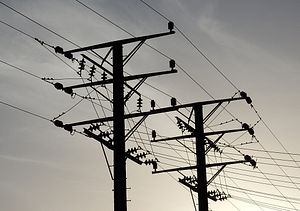A severe storm that caused a statewide power blackout in South Australia last week has led to political debate over the use of renewable energy and the country’s energy security as a whole.
High winds, lightning strikes, heavy rainfall, and hail resulted in multiple energy transmission system faults within the state. The state’s main city of Adelaide was without power from Wednesday afternoon until dawn on Thursday morning, and some parts of the state remain without power.
Questions have been raised as to whether South Australia’s rapid shift to wind power in place of coal was responsible for the blackout, as well as whether these energy sources are able to provide overall energy security. South Australia has closed eight coal-fired power stations in the last five years, and now 40 percent of its energy supply comes via renewable energy, mostly wind turbines.
Prime Minister Malcolm Turnbull seemed to believe that this was the case when he stated, “There is no doubt that a heavy reliance on intermittent renewables does place very different strains and pressures on a grid than reliance on traditional base load power, whether it is fossil fuel or of course hydro. So these intermittent renewables do pose real challenges.”
Turnbull expressed his opinion that the Labor Party had been irresponsible in pursuing renewable energy, adding further that “a number of the state Labor governments have over the years set priorities and renewable targets that are extremely aggressive, extremely unrealistic, and have paid little or no attention to energy security.”
Yet this politicking over the blackout came before any real evidence over what had occurred surfaced. It wasn’t until mid-week that the Australian Energy Market Operator, the body responsible for the national electricity grid, released their preliminary report.
The report stated that the initial investigations identified the root cause of the blackout was likely to be the multiple loss of 275 kilovolt (kV) power lines during storm. The dramatic reduction in transmission led the system to seek power from the interconnector to the grid in neighboring Victoria; however, the amount of energy the system attempted to pull overloaded the interconnector, leading to its automatic protection mechanism being activated, shutting down the interconnector and causing the blackout.
The report also stated that the damage caused by the storm was so severe that the system would have shut down no matter what the mix of energy generation was.
The real issue for South Australia remains its isolation. Australia’s population is so heavily concentrated on the east coast of the country that its energy infrastructure is naturally more heavily focused in these populated regions. In more densely populated areas of the world there is a large network of nearby transmission lines that are able to compensate for any localized failures and supply demand by alternative connections without overloading.
Australia’s energy grid as a whole is among the most dispersed or “skinny” interconnected electricity grids in the world. The consequences of this are that its transmission lines are more likely to become overloaded, and then tripped by the automatic protection systems designed to prevent further or more severe damage to the grid as a whole.
Adding further transmission connectors from the eastern states could resolve this problem for South Australia. However, installing these transmission lines are very expensive, the cost of which would undoubtedly be passed on to electricity consumers. South Australian residents already suffer price spikes with their power supply as it switches between energy sources, and it is doubtful the state’s residents would be willing to pay more to provide security in the case of future weather events. The other option is the use of batteries to store power to prevent price spikes.
While the storm has caused damage to the state’s energy infrastructure, the resulting blackout is causing further damage to the state’s economy. The state’s mining and heavy industrial operations are facing revenue losses of up to AU$150 million (US$114 million), with an estimation that it will be another week before some sites will have power reactivated. This includes BHP Billiton’s giant Olympic Dam mine, which contains the largest uranium deposits in the world, and the fourth largest copper deposits, and whose operations are vital to the state’s revenue. The struggling Arrium steelworks had its power resorted on Wednesday this week, a week after the storm.
Due to the blackout the country’s energy ministers from both federal and state levels will be holding an emergency meeting in Melbourne on Friday to discuss a broad review of the country’s electricity market and the requirements for Australia’s future energy security.
































